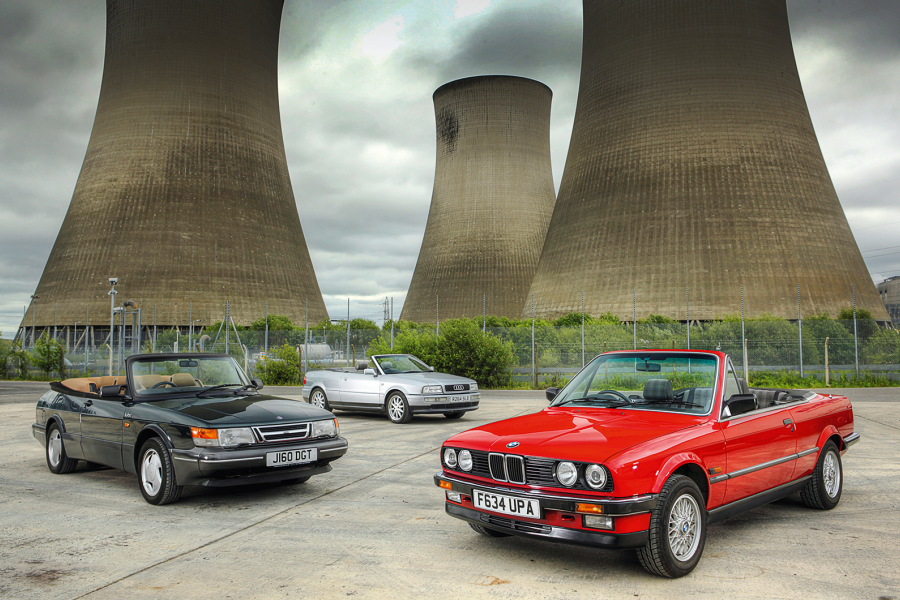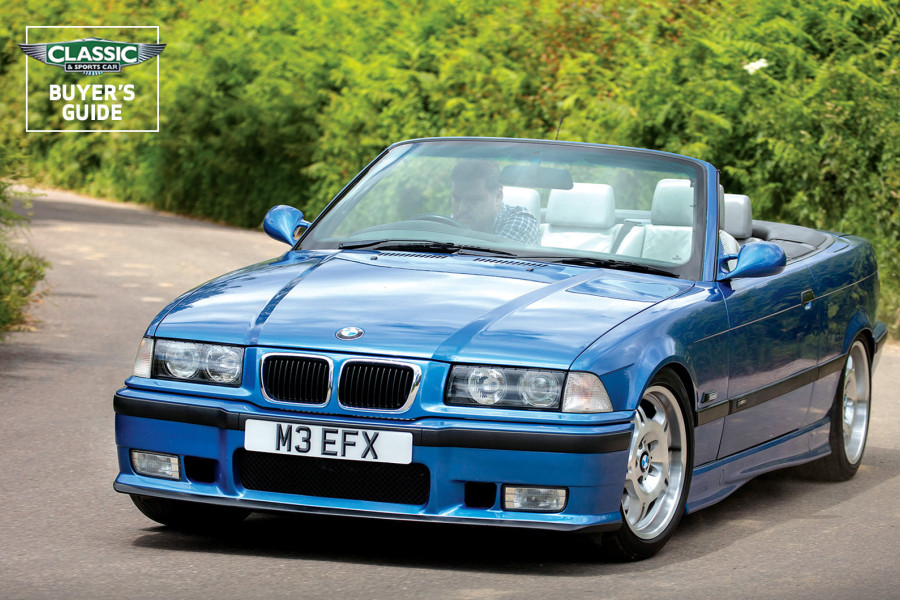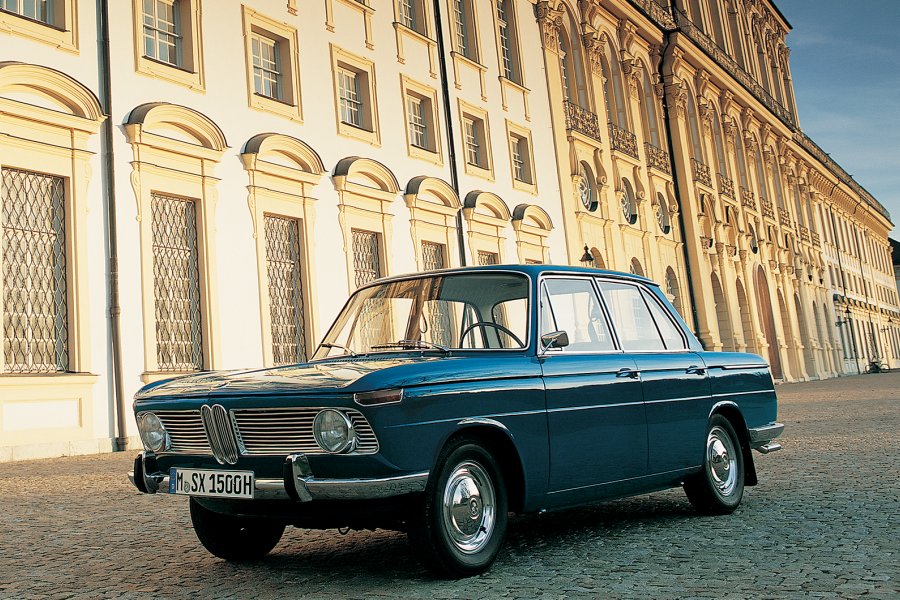The single rear wheel is imperceptible, and the ride is reasonably comfortable.
It’s cheery, but best on slow village roads and city streets.
To get some meaningful comparison, I swap seats with Dave and step into his prize-winning Messerschmitt, one of the Isetta’s direct period competitors.
The KR200 doesn’t boast the extensive licensing history of the Isetta, but the eagle-eyed will have noticed that this is actually an FMR, not a Messerschmitt.
The two-stroke engine has ’bike origins
Once West Germany had joined NATO in 1955 and the former maker of ME109s was allowed to manufacture planes again, its interest in producing microcars soon faded, and in 1957 the entire Regensburg factory that had been building the cars was sold to a consortium headed by the car’s designer, Fritz Fend.
As odd as the Isetta’s front-opening door is, stepping into the Messerschmitt, with its Perspex canopy tipped open to one side, is utterly alien.
The driver’s seat has a raised setting to make ingress easier, but it’s unlike anything else in the automotive world.
The FMR KR200 has a swing-arm set-up at the rear
A ride on a miniature stream train, the sort you might find in a suburban park, is the closest thing to it.
If the faux snakeskin trim doesn’t confuse you further, the steering yoke surely will.
The KR200 does have three pedals, but its motorcycle-sourced powertrain is made obvious by the gearshift.
This time the gearstick is on the right-hand wall, and it’s essentially a motorbike’s sequential shift modified to work with hands rather than feet.
No snakes were harmed trimming the FMR KR200’s cockpit
This time I mustn’t stall, because the ’Schmitt struggles with hot starts on a warm day.
I pull the lever back to select first and pile on the revs from the buzzing two-stroke.
Like the Isetta’s, its clutch is a grabby little thing, but, once under way, the KR200 accelerates with surprising vim – and astonishing clatter, noise and smoke.
Its steering is completely direct, with no reduction gear, so small movements of the yoke have the car darting into and around corners.
The Isetta 300 (left) has 3bhp more, but the lighter FMR KR200 is nippier
It should be frighteningly unstable, but the Messerschmitt’s incredibly low height and long, tandem shape give it directional stability.
In fact, while its controls are utterly unlike most cars’, it does a much better job of handling like a car than the Isetta.
There’s no doubt that the Isetta is the best choice for popping round the corner to the shops, but if your journey involves going over 30mph and any strenuous cornering, the KR200 is the sure pick.
‘It has been a work-in-progress over 30 years, painted and repainted as parts were found or new skills learned’
You’ve probably guessed where this is heading, though.
Despite owning two of the best examples of these microcars to be found anywhere, Dave isn’t going to stop.
The Isetta’s blue paint isn’t exactly the right shade, he says, and he’s planning a respray of the body – although painting is the one bit he doesn’t do himself.
But there’s another project in the works, too: a replica Brütsch Mopetta, a three-wheeler open roadster of which just 14 were originally built.
“All the skills I’ve learned and developed over the years of doing the other cars will get put into that,” he says. “I’ll put it up on trestles and it might take me five years, it might take… Well, there’s no limit.”
Images: Max Edleston
Factfiles
Isetta 300
- Sold/number built 1957-’64/30,000
- Construction tubular steel boxed chassis, steel body
- Engine iron-barrel, alloy-head, ohv 298cc single-cylinder, air-cooled four-stroke with Bing carburettor
- Max power 13bhp @ 5200rpm
- Max torque 14lb ft @ 4200rpm
- Transmission four-speed manual, RWD
- Suspension independent, at front by Dubonnet-type swing arms, coil springs rear quarter-elliptic leaf springs; telescopic dampers f/r
- Steering worm and nut
- Brakes hydraulic drums
- Length 7ft 10in (2387mm)
- Width 4ft 6in (1371mm)
- Height 4ft 5in (1346mm)
- Wheelbase 5ft (1524mm)
- Weight 784lb (356kg)
- Mpg 55
- 0-50mph 41.5 secs
- Top speed 52mph
- Price new £365 (1957)
- Price now £15-35,000*
FMR KR200
- Sold/number built 1955-’64/30,286 (all)
- Construction tubular steel chassis, steel body
- Engine iron-barrel, alloy-head, 191cc single-cylinder, air-cooled Sachs two-stroke with Bing carburettor
- Max power 10bhp @ 5250rpm
- Max torque n/a
- Transmission four-speed sequential manual, RWD
- Suspension independent, at front by swing axles rear swing arm; rubber torsion springs, telescopic dampers f/r
- Steering direct, via track rods
- Brakes cable-operated drums
- Length 9ft 3in (2820mm)
- Width 4ft (1220mm)
- Height 3ft 11in (1200mm)
- Wheelbase 6ft 8in (2030mm)
- Weight 506lb (230kg)
- Mpg 60
- 0-60mph 27 secs
- Top speed 62mph
- Price new £342 (1957)
- Price now £15-35,000*
*Prices correct at date of original publication
Enjoy more of the world’s best classic car content every month when you subscribe to C&SC – get our latest deals here
READ MORE
Miniature marvel! Mammoth Messerschmitt KR200 restoration
Also in my garage: classic bubble cars and number-one singles
Classic shrine: The National Bubble and Microcar Museum
25 classic superminis
Charlie Calderwood
Charlie Calderwood is Classic & Sports Car’s Features Editor





























